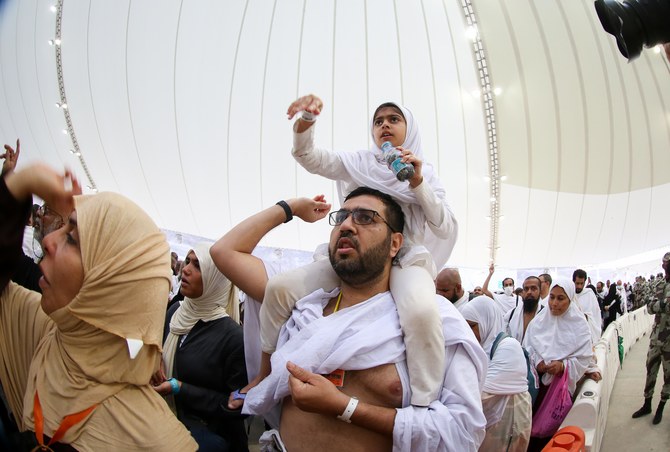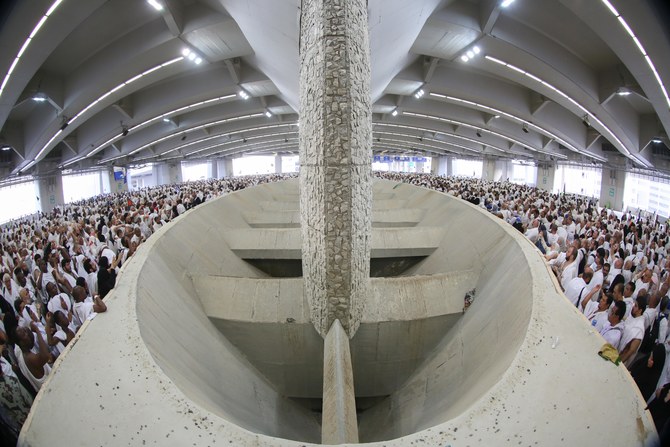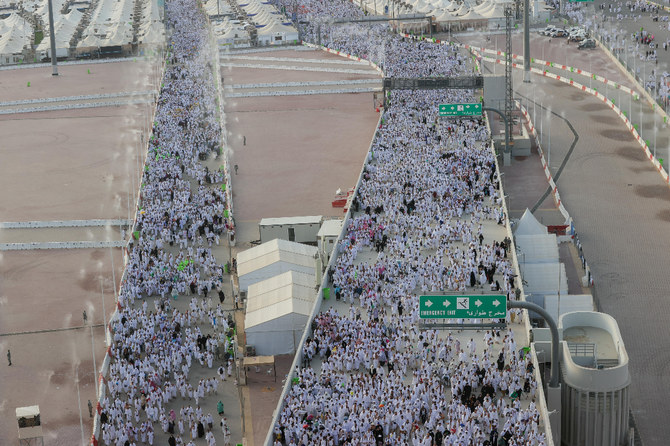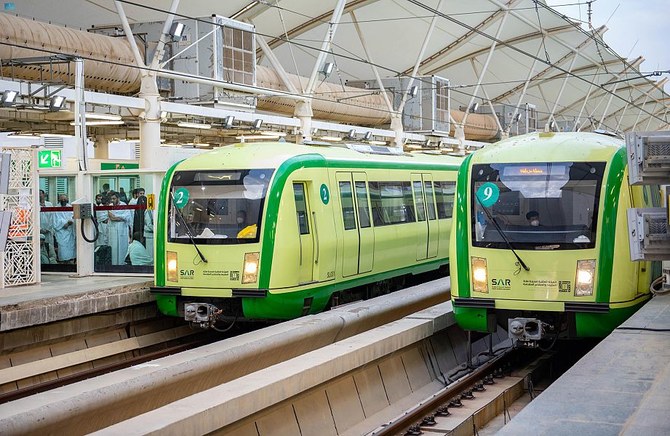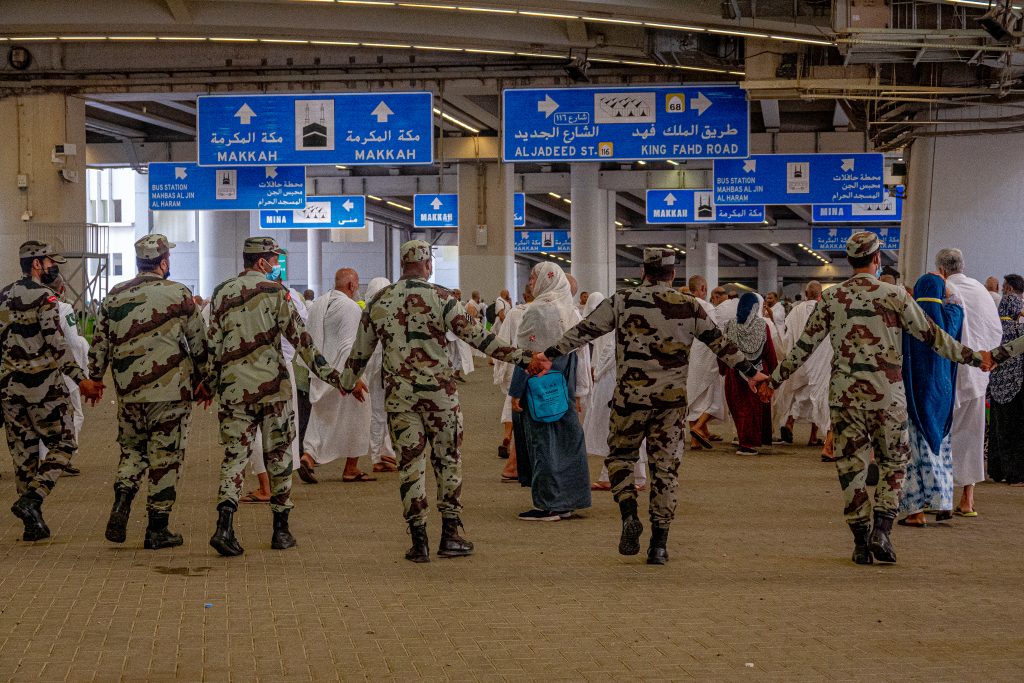Mohammed Al-Kinani & Rahaf Jambi
MINA: Early Saturday morning, Hajj pilgrims began to move to the Grand Mosque in Makkah for Tawaf Al-Ifadha, celebrating Eid Al-Adha.
Prior to that, they had cast stones at the Jamarat, sacrificed animals, and had their heads shaved for the 10th day of Dul Hijjah, which marks Eid-Al-Adha.
The pilgrims threw seven pebbles each at the pillars of Al-Jamarah Al-Sughra, Al-Jamarah Al-Wusta and Al-Jamarah Al-Kubra in a ritual symbolizing the devil’s stoning by the Prophet Ibrahim.
Afterwards, they return to their accommodation to shave their heads, as a mark of rebirth. The sacrificing of animals represents Allah’s gesture to Ibrahim, who spared his son Ismael.
Nussarat, a Pakistani pilgrim, threw her pebbles having traveled all the way from Pakistan with her husband to perform Hajj.
“Coming to Saudi Arabia to participate in Hajj is a dream come true,” she told Arab News. “Today we celebrated Eid Al-Adha, and then we walked through Mina until we reached Jamarat Al-Aqaba, where we threw stones at the wall.
“This action was very organized, and there was no crowd of people pushing each other, and it was easier than I thought,” Nussarat added.
Ezz Al-Deen, another pilgrim from Algeria, who had brought his country’s flag with him to photograph at the event, told Arab News: “It’s my first Hajj, and I decided to go with my daughter. I was surprised by how easy it was to come here and stone the devil in less than two minutes. I think it’s because this year’s pilgrimage numbers aren’t very high — the organization was really good and everyone is collaborating with us.”
Adil, a pilgrim from South Africa, said that the trip from Muzdalifah to the Jamarat had an amazing atmosphere, as he had walked with pilgrims from all over the world chanting “Labbaik Allahumma Labbaik.”
He told Arab News: “I felt like I was shunning the whispers of the devil to indulge in sin away from my life, like how the Prophet Ibrahim, peace be upon him, shunned the devil.
“As it was the so-called rush hour, the organization and coordination of the guards was efficient and smooth; after the stoning, I experienced some difficulty finding my route back to my tent in Mina, but overall, it was a great experience.”
Hajj authorities, including emergency services from the Presidency of State Security, health workers, civil defense, and Saudi Red Crescent Society teams, were all in attendance for the benefit of pilgrims, as well as officials and volunteers representing various other government agencies.
Security services were also on hand to ensure congestion was kept to a minimum and to manage the flow of the approximately 899,353 pilgrims at the holy sites this year, according to the General Authority for Statistics.
The movement of pilgrims towards the Jamarat Bridge and the surrounding area saw a safe flow, as the pilgrims were taken in groups to the stoning area according to plans set in advance.
All pilgrims had spent the previous night resting in their tents at Mina on the first day of the stoning.
On Friday, spokesman for Hajj and Umrah Hisham Saeed confirmed in a press conference that all plans for the event were coordinated with all relevant authorities, and that his ministry is following schedules with specific times to ensure the smooth movement of crowds across various stages, beginning from the day of Tarwiyah in Mina, on to Arafat and Muzdalifah, before transporting people back to Mina for the stoning and other Hajj services.



